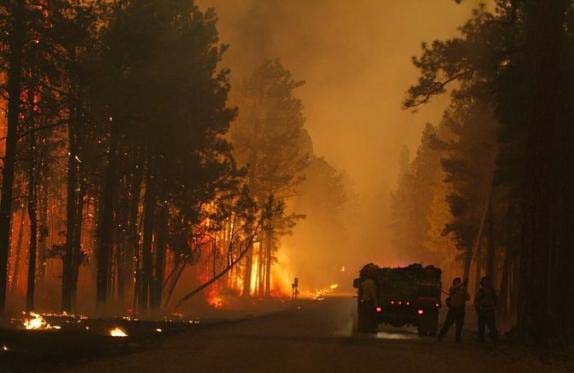Ed Pommerening, 1947-2022
by Jim Petersen, Editor, The Evergreen Foundation
When Ed Pommerening died last Christmas Eve in Kellogg, Idaho he left a forestry legacy that is unmatched in Idaho history. I grew up in Kellogg and knew Ed mostly by reputation. We last talked by phone in 1996. I was in the middle manuscripts for an Evergreen edition featuring forests and forestry in Idaho and I wanted to include a short story about the miraculous rebirth of forests on the barren hills of my youth.
Ed is the reason Idaho’s Silver Valley between Smelterville and Big Creek is covered with countless thousands of conifers, many of them 50 feet tall. It is a stunning tribute to the dogged determination of a young man who once told me that the Kellogg he saw for the first time in 1972 reminded him of the godawful agent orange devastation he’d seen while serving with the 101st Airborne Rangers in South Vietnam.
That young man was Ed Pommerening. He was coming to Kellogg then to begin work as the Bunker Hill Company’s first forester. “Uncle Bunker” was by far Idaho’s largest industrial employer, the Union Pacific Railroad’s largest customer by tonnage, and the largest power consumer in the entire Washington Water Power system. At one time, Bunker Hill was the largest mining and smelting company in North America. It supplied most the lead we threw at the Germans and Japanese during the Second World War.
I worked my way through college in company stopes a mile beneath the streets of Kellogg. It was dangerous as hell — but great fun. I have no idea what convinced Ed that he could turn the Silver Valley’s barren hills green again — or how he convinced the company to invest in the crazy idea that he could grow countless thousands of seedlings 3,000 feet down in the mine, but in August 1975 company carpenters built Ed’s first 40-foot long underground greenhouse. One of my late father’s plumbing crews ran the water lines.
The scale of Ed’s thinking was breathtaking but the idea was not new. Many miners grew vegetables in pots in pitch black drifts with only the illumination of a single lightbulb. The air temperature was a constant 72 degrees, so all you had to add was some soil, water from a nearby drill line, a little light, and voila! It certainly helped that Ed had earned two forestry degrees from the University of Idaho. His connections would prove invaluable after his first seedlings died soon after they were transplanted on treeless hills by high school kids and civic groups.
The same thing had happened to seedlings my Cub Scout pack planted in Vergobbi Gulch in the 1950s. We never knew why, but soil scientists at the University of Idaho figured out that sulfur dioxide gas released from stacks at the Bunker smelter had polluted the soil. Acid was killing the seedlings. The solution: plant them deeper and add a dash of neutralizing potash for good measure. The beautiful result graces both sides of Interstate 90 between Smelterville and Big Creek: Ponderosa, Scotch and Austrian pine, Douglas-fir, western larch, western white pine, blue spruce, willow, and poplar.
The homesteader’s apple orchard behind our home on Mission Avenue has given way to a sea of green that turns to gold in the fall. Words seem inadequate.
A very good case can be made for the fact that the Silver Mountain Resort and Ski Area and its legendary gondola are prospering today because of Ed Pommerening’s modesty and quiet determination. Small wonder that his forestry consulting business, Riverview Timber Services, thrived for decades.
The Kellogg where I grew up is long gone: the smelter whistles that announced shift changes, the friends I made underground, Al Laramie at the piano on Friday nights at the old Sunshine Inn, and the vibrancy of Kellogg’s booming economy. We thought Bunker would go on forever. For better or worse, it didn’t. The end came in 1981. Labor strife and unattainable federal air and water quality standards were the main reasons. But Ed’s vision provided the catalyst for Kellogg’s rebirth.
The power of forestry turned the barren hills of my youth green again and my hometown has a future. There is a bronze statue of a miner at the corner of Main and McKinley Avenue in uptown Kellogg. There needs to be one of Ed standing beside him.
~ Jim Petersen, Editor
EvergreenMagazine.com
WATCH THE VIDEO:
The Reforestation of Silver Valley is a fascinating story told by Ed Pommerening and others about an industry that took the initiative to solve a major environmental problem in northern Idaho. The video was funded by the Kootenai-Shoshone County Farm Bureau and Idaho Farm Bureau and was produced by Matthew Bane. Watch it [HERE].



